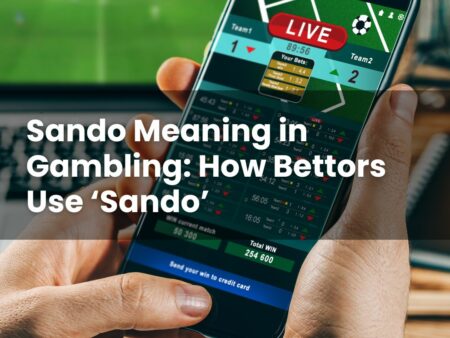Thinking about getting into sports betting but unsure what all the different terms mean? If you have seen the phrase ante-post and wondered what it is, you are not alone. It can seem confusing at first, especially if you are new to placing bets online or in person.
This guide explains how ante-post betting works in the UK, what sets it apart from other markets, and the key rules that apply. It also covers what happens if your selection does not compete, when these markets open, and how to decide if ante-post betting suits your style. Read on to learn more.
What Is Ante-Post Betting and How Does It Work?
Ante-post betting means placing a bet on a sporting event well before it takes place. You will often see these markets months in advance, sometimes before the final line-up is confirmed. For example, you might back a horse for the Grand National long before the entries are final.
Because there is more uncertainty at this early stage, the prices can be higher than you would find nearer the start time. The trade-off is that ante-post bets are normally all-in, run or not. If your selection does not take part, the stake is usually lost and not refunded.
Not every site offers the same ante-post markets or identical rules. It might be worth reading the market terms shown on the event page so you know how settlement works for that specific bet.
If you do decide to try your hand at sports betting, remember to do so responsibly and within your means; never wager more than you can afford to lose.
How Do Ante-Post Odds Differ From Standard Betting Markets?
Ante-post odds appear earlier and reflect a wider range of unknowns, such as injuries, form changes, transfers, or withdrawals. That uncertainty is factored into the price you receive at the time you bet, which could make the odds look more attractive than they might be closer to the event.
Standard betting takes place nearer the start of a race or match, when more information is available. By that point, the field is clearer and recent performance is better understood, so prices tend to shorten. With ante-post bets, the odds you take are fixed when you place the bet, so your potential return is set even if the market moves later.
Each bookmaker can price markets differently and apply its own house rules. The key is to compare what is offered and check the market rules displayed with the bet.
What Happens If a Horse or Team Doesn’t Compete?
Before looking at the timing of ante-post markets, it might be useful to understand how non-runner situations are handled.
Non-Runner Rules Explained
If you place an ante-post bet and your chosen horse or team does not take part, the stake is usually lost. This is because ante-post markets are typically all-in, run or not, and the possibility of non-participation is already reflected in the price.
By contrast, some closer-to-the-event markets may be offered on a Non-Runner No Bet basis, which returns your stake if your selection does not compete. This is more common near major meetings or late in tournament markets and is not the default for ante-post.
You will find the relevant rule clearly shown on the market itself. If it states all-in, run or not, expect no refund for non-runners. If it states Non-Runner No Bet, a non-participant is settled as a refund.
When Can You Place an Ante-Post Bet?
Ante-post markets can open a long way out. For major horse races like the Cheltenham Festival or the Grand National, prices may appear many months in advance, sometimes even before all entries are confirmed. Football tournaments and cup competitions often have outright markets available well ahead of the first round.
Lead times vary by event and by site. Some bookmakers post prices soon after the previous season ends, while others wait until there is more certainty about participants. Cut-off times for placing an ante-post bet are shown on the event page, and they can be hours, days, or months before the start, depending on the market.
When a market is listed early, information is limited and the field can change. That is part of what shapes the pricing and might be a good point to consider when deciding if ante-post betting is a fit for you.
Is Ante-Post Betting Worth It?
Ante-post betting may appeal if you enjoy taking an early view and are comfortable weighing up what might change before the event. The potential for a bigger price is balanced by a higher chance that the picture shifts, whether through injuries, form, transfers, or withdrawals. If your selection does not run in an all-in, run or not market, the stake is usually lost.
For some, that trade-off is worthwhile, especially when they have a strong early opinion on a race or outright market. Others prefer to wait until closer to the start, when fields are confirmed and options like Non-Runner No Bet sometimes appear. Neither approach is right or wrong, it simply comes down to how you like to bet and the level of uncertainty you are comfortable with.
Whichever route you take, it might be wise to check the market rules shown with the bet so you know how settlement works. With a clear view of how ante-post betting operates, you can decide when an early position makes sense and when it could potentially be better to wait.








